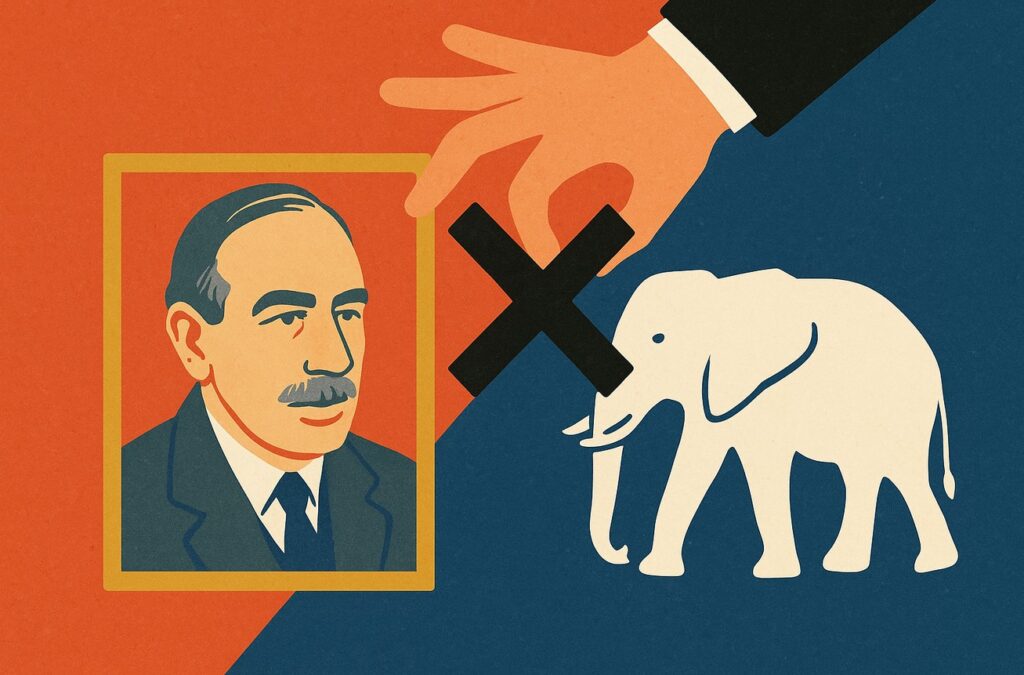- Is military spending the route to economic salvation?…
- The seen vs. the unseen…
- Can you imagine stock market wins 138 times bigger than Nvidia? If you’re like most people, probably not. But then again, most people haven’t seen this report.
Dear Reader,
Yesterday a Spiegel article drifted in over the transom — “Germany’s Economy Pins Its Hopes on the Defense Industry,” by title.
The article proceeded to instruct us how elevated defense spending will invigorate and stimulate the German economy.
Here in the United States, drummers for the Ukrainian conflict argue an identical case.
By manufacturing armaments for poor little Ukraine, they claim, United States arms manufacturers will drive a virtuous trade.
They will prosper, their suppliers will prosper.
They will put multiple thousands to work and elevate the gross domestic product.
Expanding circles of prosperity will fan out in all directions.
The Premise, Established
Yet I proceed from a fundamental premise:
Government commands no resources of its own.
Before it can ladle out one slender dime for guns, butter or circuses, it must first draw upon two pools of resources — taxes or credit.
Government seizes its dollar in tax by placing a gun against the citizen’s ribs… and opening his wallet.
Yet the identical dynamic obtains with the borrowed dollar. It is merely a robbery delayed, a theft at one remove.
That is because interest on the borrowed dollar must be paid.
And who stands behind the government’s promise to repay?
The answer is the fellow with the sidearm placed against his ribs — the taxpayer.
He pays now in taxes or he pays later in taxes.
Either way… he pays.
Thus we have established the premise. Let us now proceed from that premise.
The Great Opportunity Cost
Assume the taxed or borrowed dollar funds the nation’s defense.
It is directed toward the purchase of new ships, new planes, new tanks.
These are visible to the observer.
He sees the new destroyer sliding down the ways. He sees the sleek new fighter jet boring holes in the bright blue sky. He sees the new tank prowling the testing grounds.
Here is what he does not see:
He does not see the manifest ways the private citizen would have put his dollar to use — if it had not been taxed away from him.
He may have directed it toward the purchase of a new automobile. He may have invested it in the hope of profitable return. He may have saved it against the rainy day.
That is, this fellow’s dollar would have served a private want or need… and benefitted the economy in some small way.
The automobile vendor may have spent the dollar on a gift for his wife.
The bank may have loaned his dollar to a promising business. The invested dollar may have yielded him $2 one day.
A million parallel examples present themselves.
Yet the dollar under present consideration has been conscripted into national service. It is unavailable for private duty.
The military hardware you can see. The private economic activity you cannot… because it was never undertaken.
The Seen Versus the Unseen
Thus we come to the central theme of Henry Hazlitt’s classic Economics in One Lesson — the seen versus the unseen:
- It has come into being through the magic of government spending… The country would have been just that much poorer [without it]. Here… the government spenders have the better of the argument with all those who cannot see beyond the immediate range of their physical eyes.
- They can see the bridge. But if they have taught themselves to look for indirect as well as direct consequences, they can once more see in the eye of imagination the possibilities that have never been allowed to come into existence. They can see the unbuilt homes, the unmade cars and radios, the unmade dresses and coats, perhaps the unsold and ungrown foodstuffs.
Yet the mass of men lack the eyes of the imagination:
- To see these uncreated things requires a kind of imagination that not many people have. We can think of these nonexistent objects once, perhaps, but we cannot keep them before our minds as we can the bridge that we pass every working day. What has happened is merely that one thing has been created instead of others.
Keynesianism Is Keynesianism
Mr. Hazlitt does not plead a case against all public spending. Nor do I.
And in many instances the abovesaid bridge may repay its cost by many multiples.
Meantime, I am heart and soul for the national defense. May the sword of the Republic be sharp!
Should the new ship, the new plane, the new tank prove vital for the national defense, then let us have them.
Yet as I am against left-wing Keynesianism, I am against right-wing Keynesianism.
I believe that neither butter — nor guns — are agents of economic salvation.
Columnist Michael Lind:
- In 1944, mostly military federal spending was 37.8% of GDP. If military spending works such wonders, why not devote 40% of the economy to it, and not just 6%? If military Keynesianism is considered such a success by conservatives, they can hardly balk at what the Prussian military, during World War I, called “war socialism.”
Let us then open the imagination’s discerning eye.
Through that eye we can view the countless goods and services denied existence under the banner of “war socialism.”
Through that eye we can view the human wants and needs that government spending leaves unmet.
Alas, Washington’s is cemented shut.
Regards,
Brian Maher
for Freedom Financial News




